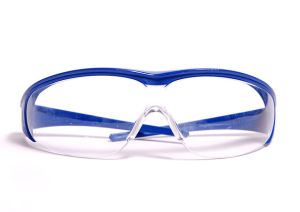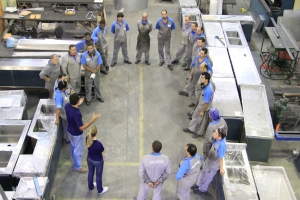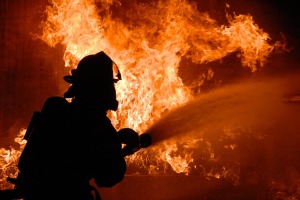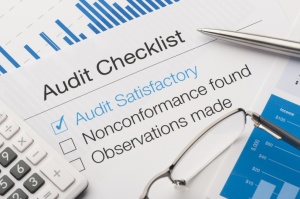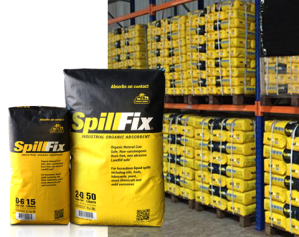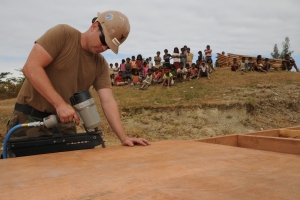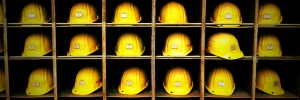
Image courtesy of B3D_ on Flickr
Are you comfortable with the working conditions at your job? Do you go into work every day knowing your basic safety needs are met, or do you stress about when the next harmful incident will occur?
A safe workplace is an ideal workplace, in more ways than one. For example, knowing how to both spot and address potential safety issues within your own workplace could help save you, fellow coworkers, or even your superiors from a potentially dangerous situation; this protects everyone on site from serious injury or death. In addition to protecting the lives of those involved, addressing safety issues is also likely to save companies money. After all, safer workers are focused and productive workers – and safer workplaces are less likely to experiences fines or costs of damage in the event of a worksite accident.
Unfortunately, too often people find themselves afraid to have a serious discussion about workplace safety. However, it’s a conversation that needs to happen. To help get it started at your own company, trying asking yourself these simple questions and jumpstarting a real conversation about workplace safety with your coworkers.
- Do you know the greatest risks in your industry?
Are you aware of the risks that go hand in hand with your industry? Although it varies between jobs and during different times and scenarios, supervisors should be clear from the beginning, even from the interview, about what kind of risky situations workers could be required to put themselves into in order to perform their job correctly. Understanding exactly what they need to watch for can help staff members better prepare for potential on-site accidents.
- Does everyone who needs it have the appropriate licensing?
A proper license or certification means that the worker has learned and passed training classes to work in certain situations. For example, you may need certification to handle specific equipment or even dangerous materials. If an unlicensed worker is doing a job that is meant for a certified professional, it puts not only that person at risk, but also puts everyone around them – and an entire company’s operating abilities – at risk.
- Is training being done periodically?
As time progresses, new safety standards evolve based on industry needs. Having regular safety meetings to inform employees of new safety policies and laws will ensure that everyone within a company is being kept up to date on these developments, thereby reducing the risk of an out-of-date procedure creating an unsafe scenario at work.
- Are procedures set in place in the event of an emergency?
Emergencies can happen any time – and to ensure that they can be handled, every single employee needs to know what should be done in the event of an emergency situation. Not only should emergency procedures be written and posted at your workplace in an easy to understand and readily accessible fashion – they should also be practiced during training and drill sessions, so that employees are already briefed on what to do in an actual emergency. Policies should also be revisited and reviewed every couple of months to ensure the safety standards laid out in them are up to date.
- Are proper safety gear and equipment provided?
Basic safety gear should be stored safely and kept on hand for all employees who may need them to handle an emergency. Some examples of essential tools include hard hats, goggles, gloves, and an easy to use spill absorbent product. However, it’s important to remember that additional basic items may be needed, and a complete list of “must have” safety gear can vary between different organizations and even between different departments of the same organizations. Because of this, n assessment should be completed by each department in the organization to determine what specific safety equipment is required.
- Are safety audits performed on a regular basis?
Think that safety audits aren’t necessary at your place of work? Think again. Regularly scheduled safety issues provide much-needed time to examine worksites for problems that need to be addressed ASAP. This is especially important when dealing with large or heavy machinery, and other types of equipment that could injure employees or create environmental hazards during a spill. If safety audits are not part of your regular workplace overhaul, it’s time to add them to your list of protocols.
- Do your managers and coworkers take safety seriously?
Employers and superiors should always take your safety very seriously. Worker safety should always be a top priority. If your managers joke around about general safety, that may be a sign that they have the potential to jeopardize your well being by not taking safety in general seriously. The same goes for your coworkers. If a coworker is goofing around in a dangerous situation, they can harm themselves and those around them. If an employee isn’t taking safety matters seriously, they should be reported to their supervisor.
Each of questions can help get an important conversation going about safety in the workplace, and each question is designed to address a different but equally important safety issue. By discussing each of them in-depth, you can begin to locate lapses in the safety procedures of your workplace, as well as a lack of knowledge in the employees. Most importantly, once you have identified these gaps, you can improve and address them before they lead to a serious accident or injury.
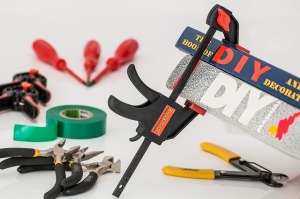 Home maintenance and improvement projects are always gratifying when you do them yourself. It may take a few tries to get everything done exactly the way you want it, but at least you did it yourself. In addition to your self-gratification, DIY projects for your home can save you money. You don’t have to hire anyone to do it for you, so you only have to pay for the tools and materials needed.
Home maintenance and improvement projects are always gratifying when you do them yourself. It may take a few tries to get everything done exactly the way you want it, but at least you did it yourself. In addition to your self-gratification, DIY projects for your home can save you money. You don’t have to hire anyone to do it for you, so you only have to pay for the tools and materials needed. 